Everybody loves being close to nature and relaxing while on vacation, and there is no better way to do this than going on a trip to explore the lush greenery of the forests in Kerala. Truly living up to its nickname, “God’s own country,” this little South Indian state nestled in the shadows of the Western Ghats is a haven for nature lovers.
Best time to visit in Kerala
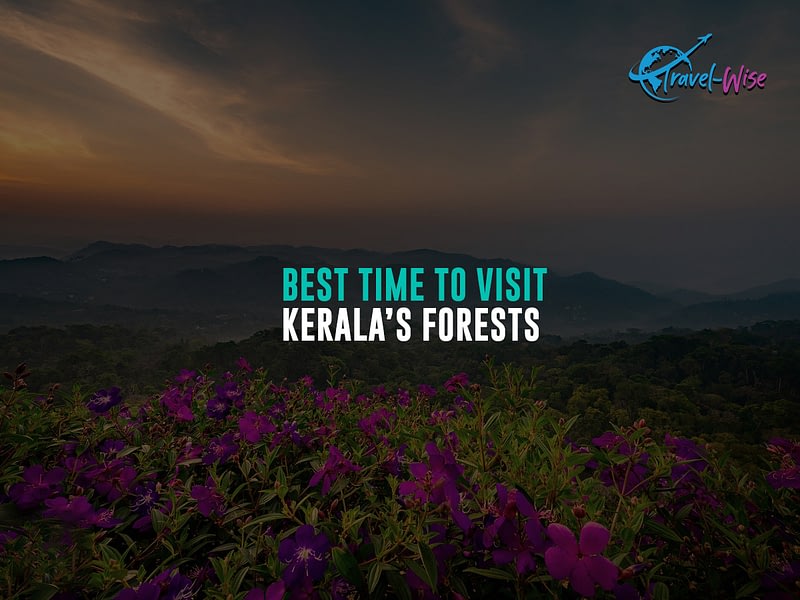
The ideal time to visit Kerala, India, varies depending on what you want to see and do. Kerala has three main seasons: the monsoon season, the winter season, and the summer season.
Monsoon Season (June to September)
The monsoon season brings heavy rains to Kerala. The landscapes are green and lush, and the backwaters are full of water. This is a great time to try Ayurvedic treatments and wellness therapies or to relax in a peaceful, rainy atmosphere. However, you may not enjoy outdoor activities like beach fun or trekking because of the rain.
Winter Season (October to February)
This is the best season to visit Kerala. The weather is cool and comfortable, with less heat and humidity. You can enjoy the beaches, backwaters, and various attractions of culture and nature. You can also do outdoor activities like trekking, wildlife spotting, and more. The famous cultural festival of Kerala, Onam, usually happens during this season.
The many forests and wildlife sanctuaries in Kerala have an abundance of biodiversity and are home to several unique birds and animals. Some of the best places to visit in Kerala to enjoy the wilderness include the following.
Gavi forest
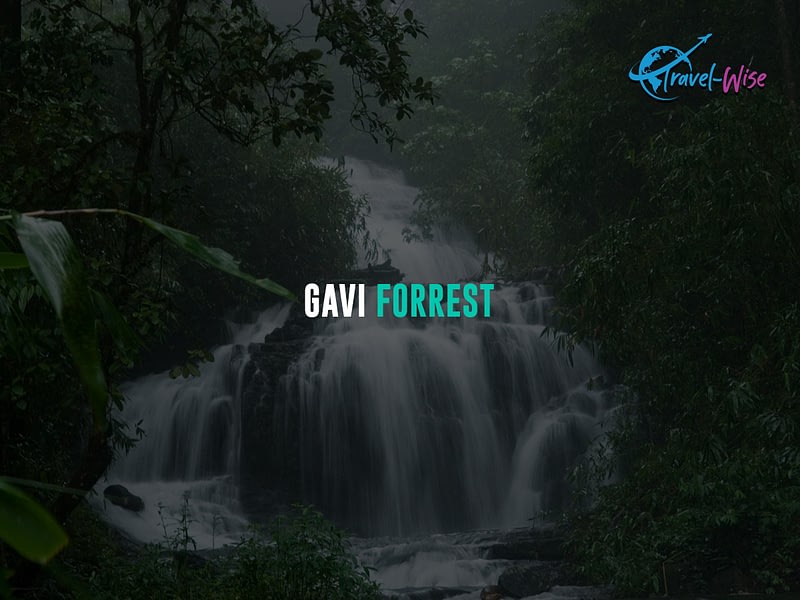
One of Kerala’s most stunning eco-tourist destinations, Gavi Forest is a pristine and well-preserved forest situated on the fringes of Pathanamthitta town. Pathanamthitta is one of the least polluted towns in India. Gavi is home to about 35 mammal species and 200 bird species, elephants, tigers, sloth bears, bulbuls, and kingfishers. It is also home to more than 150 butterfly species, 40 reptiles, and 140 varieties of orchids. In addition, the forest offers numerous activities, including trekking, bird watching, camping, boating, and Jeep safaris.
Interesting fact about Gavi Forrest
- The name “Gavi” is derived from the Malayalam word “gavu”, which means “hill.”
- The forest receives an average annual rainfall of 3,000 millimeters.
- The forest is home to several endangered species, including the Nilgiri tahr, the lion-tailed macaque, and the Malabar giant squirrel.
Highlights of Gavi Forest Area
- Biodiversity: Gavi boasts a remarkable diversity of wildlife, including over 200 bird species and 35+ mammal species.
- Avian Beauty: The area is home to unique bird residents like the white-bellied fishing eagle, blue-winged parakeet, and crested serpent eagle.
- Mammal Diversity: From elephants to tigers and Indian giant squirrels to sloth bears, Gavi shelters a range of captivating mammal species.
- Floral Wonderland: Gavi’s richness extends to its 150 butterfly species, 40 reptile species, 140 orchid species, and 170 grass species.
- Natural Beauty: The lush forest surroundings, mist-covered hills, and cool climate make Gavi a haven for nature enthusiasts and a popular tourist destination.
Munnar forests
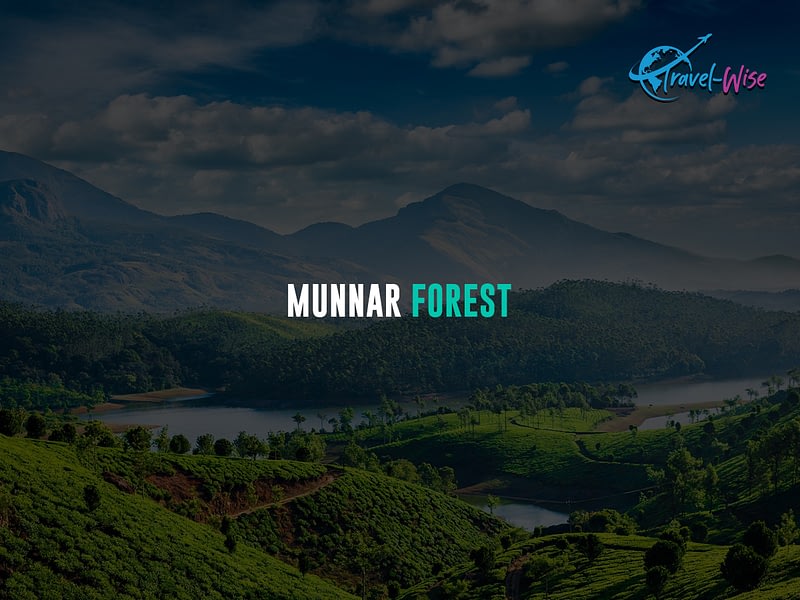
One of Kerala’s most extensive and densely forested areas is the Munnar forest range, nestled in the Western Ghats. Also, the famous Eravikulam National Park is located here. The forest is abundant with life, filled with deciduous and evergreen trees, shrublands, medicinal plants, grasslands, and hills. In addition, the region is protected by the efforts of the government and the Muthuvan people, a local people. This location offers a rare combination of a unique ecosystem, scenic beauty, and rare plants and animals. Trekking is the most common activity here.
Interesting fact about Munnar Forest
- The forests are home to several endemic species, meaning that they are found nowhere else in the world.
- The Neelakurinji flower, which blooms only once in twelve years, can be found in the forests of Munnar, and the last time it bloomed was in 2018.
- The Mannar forest has a rich biodiversity, with over 3,000 kinds of plants, of which 1,500 are flowers. They also have over 200 bird species, 50 mammal species, and 30 reptile species.
- The highest peak in Munnar is Anamudi Peak, which is 2,695 meters (8,842 feet) high.
Highlights of Munnar Forest Area
- Floral Abundance: Munnar’s forests are a treasure trove with over 3,000 plant species, including 1,500 flowering varieties.
- Avian Haven: Hosting over 200 bird species, the forests offer a paradise for birdwatching enthusiasts.
- Diverse Wildlife: Home to 50 mammal species and 30 reptile species, Munnar’s wilderness showcases a vibrant range of animals.
- Sandalwood Legacy: Marayoor’s ancient sandalwood trees, protected by the government, offer fragrant and valuable wood for perfumes, incense, and more.
- Cultural Significance: The forest area holds cultural importance in Kerala, interwoven with legends and rituals, enhancing its allure.
Marayoor Sandalwood Forest

Next, known for its fragrant sandalwood trees, the Marayoor forest, located 40 km from Munnar, is home to government-run sandalwood factories and vast sugarcane plantations. In addition, history buffs can explore the two prehistoric sites here, Ezhuthupara and Muniyara. These hills are home to tribal communities. Also, this beautiful location is ideal for hiking and other adventurous activities. You can also soak in the Pamber River’s stunning splendor while inhaling the rich sandalwood aroma.
Interesting fact about Marayoor Forest
- The sandalwood trees in Marayoor are over 100 years old.
- The forest faces several threats, including deforestation, poaching, and climate change.
- The sandalwood oil extracted from the trees is used in various products, including perfumes, incense, and medicines.
- The sandalwood trees in Marayoor are so valuable that they have been the target of illegal logging for centuries.
Highlights of Marayoor Forest Area
- Ancient Sandalwood Grove: Marayoor is renowned for its century-old sandalwood trees, protected by the government, and cherished for their fragrant and valuable wood.
- Cultural Heritage: These trees are significant in Kerala’s cultural heritage, entwined with legends and rituals that add depth to the area’s charm.
- Natural Bounty: Beyond sandalwood, Marayoor’s forests are rich with diverse plant life, contributing to the region’s ecological wealth.
- Historical Allure: The forest area’s historical resonance and natural allure make it a captivating destination for those seeking a blend of culture and nature.
Peppara Wildlife Sanctuary
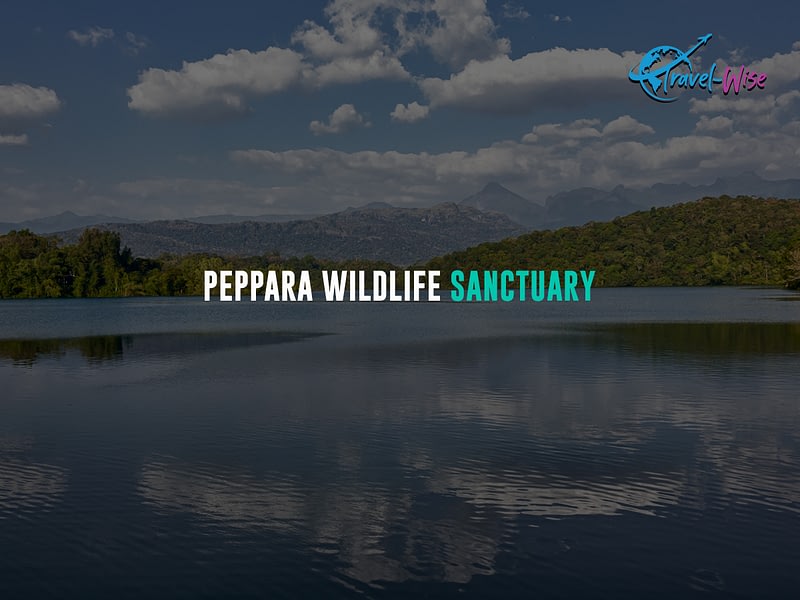
One of Kerala’s most fascinating forests, the Peppara sanctuary, is on the fringes of the capital city, Trivandrum. This slowly expanding forest covers an area of 53 square km and is a perfect place to enjoy the beauty of a lush, evergreen forest. Also, the sanctuary is home to many indigenous bird and mammal species. This forest is also great for trekking. The Vazhanthol waterfall, situated 5 km from Peppara, is also a must-visit place.
Interesting fact about Peppara Wildlife Sanctuary
- The sanctuary is part of the Western Ghats, a UNESCO World Heritage Site.
- The Peppara Dam creates a scenic reservoir, which adds to the area’s beauty. The dam was constructed in 1983 to provide drinking water to Thiruvananthapuram city and its surrounding areas.
- The highest point in the Peppara Wildlife Sanctuary is Chemmunji Mottai, which is 1,200 meters (3,940 feet) high.
Highlights of Peppara Wildlife Sanctuary
- Biodiverse Haven: Peppara Sanctuary boasts diverse flora and fauna, providing a thriving ecosystem for many species.
- Spectacular Avifauna: The sanctuary is home to various bird species, making it a paradise for birdwatchers and nature enthusiasts.
- Wildlife Variety: With its array of mammals, reptiles, and amphibians, Peppara offers a glimpse into the rich wildlife of the region.
- Picturesque Landscape: The sanctuary’s scenic landscapes, composed of lush forests and serene water bodies, create a picturesque backdrop for exploration.
- Nature Retreat: For those seeking an immersive natural experience, Peppara Wildlife Sanctuary offers a tranquil escape, making it a popular destination for eco-tourism.
Nelliyampathy Hills
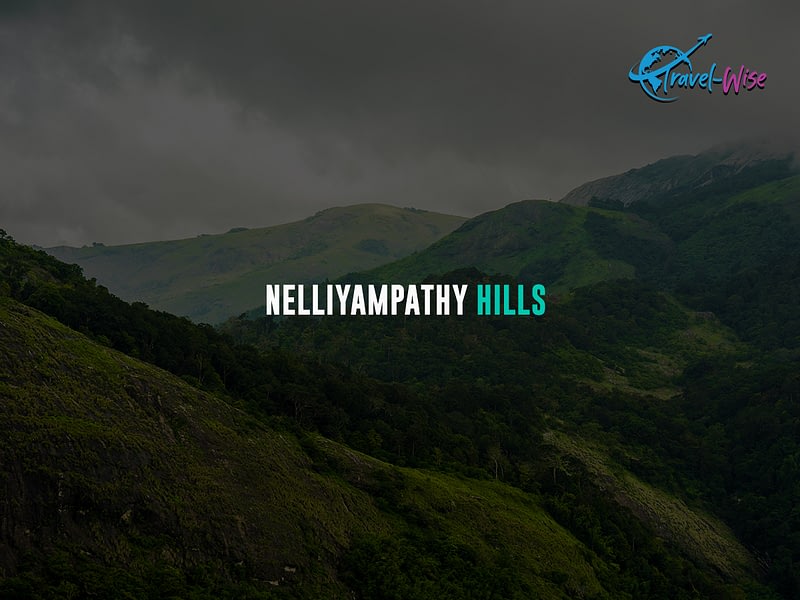
Next, located in Palakkad, a picturesque district in Kerala, Nelliyampathy Hills is a tourist destination surrounded by dazzling waterfalls. Sitting at a height of 1,500 meters, this hill town gives a breathtaking view of the surrounding region. The sparsely populated place makes it the perfect getaway for people looking for a tranquil vacation. Also, the site offers diverse sights, including tea and orange plantations, rainforest zones, scenic landscapes, cliffs, rocks, and many insect and bird species. The main attraction here is the Pothundi Dam. The place is also perfect for adventurous trekking.
Interesting fact about Nelliyampathy Hills
- Orange Orchards: The area is famous for its lush orange orchards that thrive in the cool climate, contributing to the region’s agricultural diversity.
- Tea and Coffee Plantations: Nelliyampathy Hills in Kerala, India, are known for their picturesque tea and coffee plantations that adorn the slopes, creating a stunning landscape.
- Seethakundu Waterfalls: The Seetharkundu Waterfalls, cascading down from a height, are a popular attraction, surrounded by verdant greenery.
- Historical Connection: The region has historical significance as the British used it to cultivate tea and coffee during their colonial rule.
- Cool Climate: Due to its elevation, Nelliyampathy enjoys a relatively cooler climate than the surrounding areas, making it a refreshing escape, especially during warmer months.
Highlights of Nelliyampathy Hills
- Plantation Beauty: Nelliyampathy boasts stunning tea, coffee, and orange plantations, creating a picturesque landscape.
- Scenic Waterfalls: The enchanting Seethakundu Waterfalls and other natural cascades offer serene spots for relaxation.
- Panoramic Vistas: Viewpoints like Seethakundu and Kesavam para provide sweeping panoramic views of the surrounding hills.
- Tranquil Retreat: Nelliyampathy’s peaceful ambiance and rich biodiversity make it an ideal escape for nature lovers.
Silent Valley National Park

Named “Silent Valley” due to noisy cicadas, this 237.52 square kilometer national park is situated on the borders of the Palakkad district. Also, it makes up most of the Nilgiri Biosphere Reserve and has over 1000 blooming plants, 34 mammal species, and 200 butterfly species. The rich biodiversity of the place has made it one of the most popular areas in Kerala for nature lovers. Travelers can also explore the pristine locations of Keerippara and Bommiyampatti here.
Interesting facts about Silent Valley National Park
- Unique Name: The park earned its name due to the complete absence of the usual sounds of cicadas and other insects, creating an almost “silent” atmosphere
- Research Interest: The park is a hotspot for scientific research due to its diverse ecosystems, which include rainforests, grasslands, and high-altitude areas.
- Restricted Access: To protect its fragile ecosystem, entry to Silent Valley National Park is restricted, with guided tours and controlled visitor numbers.
- Biodiversity Hotspot: Silent Valley National Park, located in Kerala, India, is considered one of the most ecologically diverse areas in the Western Ghats, a UNESCO World Heritage Site.
Highlights of Silent Valley National Park
- Biodiversity Gem: Silent Valley is a UNESCO World Heritage Site celebrated for its exceptional biodiversity within the Western Ghats.
- Lasting Rainforests: The park’s evergreen rainforests are a precious and dwindling ecosystem, offering a sanctuary for diverse life forms.
- Endangered Treasures: Home to the critically endangered Lion-tailed Macaque and unique plant species, the park safeguards rare life forms.
- Cultural Nexus: Silent Valley’s landscape intertwines with local myths and tribal traditions, reflecting a rich cultural connection to nature.
Parambikulam Tiger Reserve
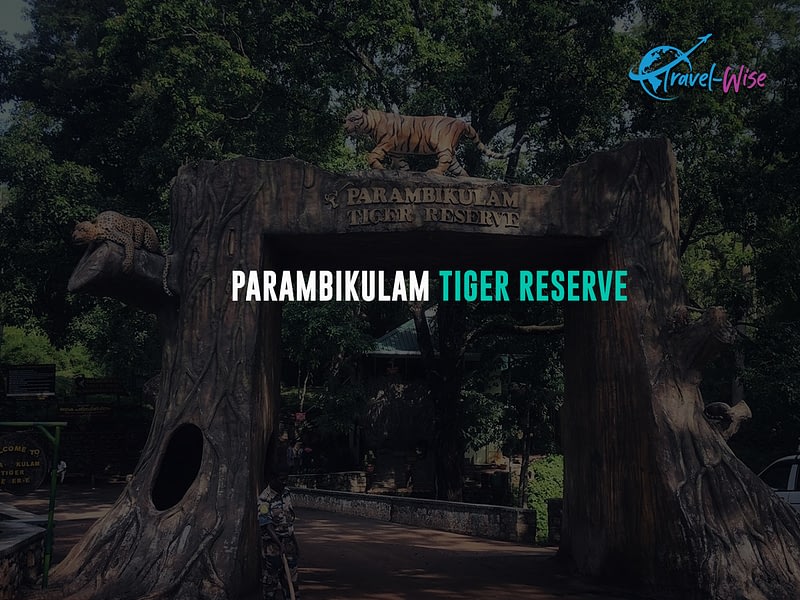
Also, one of Kerala’s most dangerous forested areas, the Tiger Reserve at Parambikulam, is where ecological diversity and scenic views coexist. This beautiful reserve is a biodiversity hotspot in the southern part of the Western Ghats. In addition, it covers 643.66 square km and is primarily a buffer zone. As a result, there is minimal human tampering, and the region is protected by indigenous people and preserved in all its natural glory.
Interesting facts about Parambikulam Tiger Reserve
- Teak Plantations: Parambikulam is home to one of the oldest teak plantations in the world, showcasing its historical and forestry importance.
- Reservoir: The Parambikulam Dam within the reserve creates a scenic reservoir, offering boat rides and attracting a variety of wildlife.
- Unique Tree Frog: Parambikulam houses the Parambikulam Patkai green tree frog, a recently discovered amphibian species found only in this region.
- Ramakkalmedu: Nearby, Ramakkalmedu offers stunning viewpoints, including a gigantic statue of Kuravan and Kurathi, characters from local folklore.
Highlights of Parambikulam Tiger Reserve
- Tiger Habitat: Recognized as a vital habitat for Bengal tigers, the reserve emphasizes the importance of wildlife conservation.
- Biodiversity Hub: Nested in the Western Ghats, a UNESCO site, the reserve shelters rare species in its diverse ecosystems.
- Ancient Teak Plantation: Home to one of the world’s oldest teak plantations, the area reflects historical and forestry significance.
Sholayar Forests
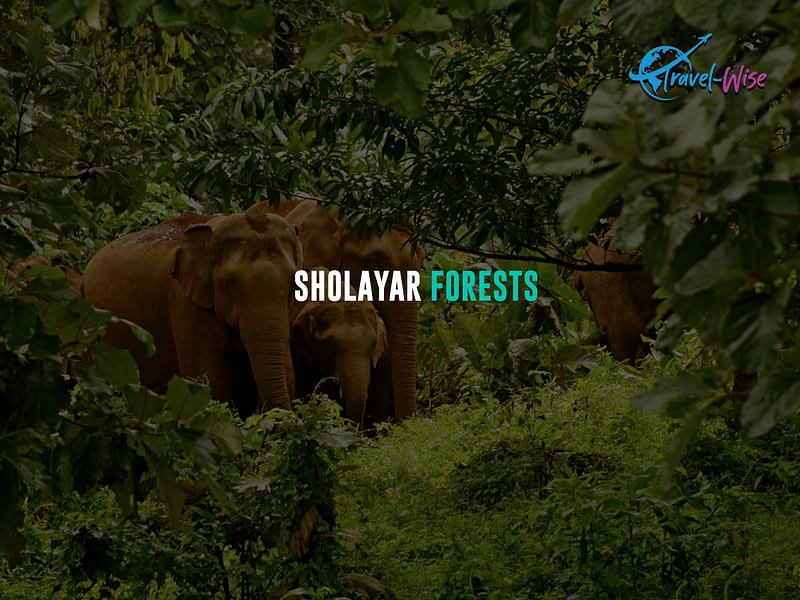
The pristine Sholayar forest is one of the most beautiful forests in Kerala, filled with streams, gorges, valleys, and grasslands. This is one of the best places to unwind and be at home with nature. The gorgeous forest is home to rare birds, spotted deer, elephants, and leopards. One of the area’s top attractions is the Sholayar Dam. Travelers can also enjoy the Vazhachal and Athirapilly waterfalls while they are here.
Interesting facts about Sholayar Forests
- Water Source: The forests are a crucial water catchment area, with numerous streams and rivers originating from the region, providing water to nearby communities.
- Monsoon Magic: Sholayar Forests are part of the Chalakudy Rainforest, which receives one of India’s highest amounts of rainfall, creating a magical misty atmosphere.
- Cultural Connection: The Sholayar region is also significant culturally, with local communities living in harmony with the forests and relying on its resources for their livelihoods.
- Carbon Sink: Sholayar’s dense vegetation serves as a carbon sink, playing a role in mitigating climate change by absorbing carbon dioxide from the atmosphere.
Highlights of Sholayar Forests
- Lush Rainforest: Situated in the Western Ghats, the Sholayar Forests are renowned for their rich rainforest ecosystem and vibrant green landscapes.
- Biodiversity Hub: Home to endemic flora and fauna, these forests are a biodiversity hotspot, contributing to the Western Ghats’ ecological richness.
- Water Source: Playing a vital role, the forests serve as a water catchment area, originating streams and rivers that support neighboring communities.
- Wildlife Sanctuary: These forests host diverse wildlife, including elephants, tigers, and unique bird species, offering a glimpse into India’s natural heritage.
Kerala’s Enchanting Folklore and Legends
Step into the mesmerizing world of Kerala’s captivating folklore and legends, where enchanting tales, ancient traditions, and colorful art forms come to life. A treasure trove of history, myths, and legends, Kerala’s folklore culture is deeply rooted in the lives of its people and reflects the state’s diverse heritage and unique identity. Whether it’s the iconic ‘Theyyam’ ritual, the famous ‘Kayamkulam Kochunni’ story, or the intriguing origin myth of the land, Kerala’s folklore is a window into its fascinating cultural landscape that you won’t want to miss.
As you explore the lush landscapes of Kerala, let the colorful tales and rich traditions of its folklore culture enchant and inspire you. From the lively music and dance performances that bring stories to life to the intriguing myths and legends passed down through generations, Kerala’s folklore culture is a testament to its deep connection with its past and the rich diversity of its people. So, get ready for a journey that takes you into the heart of Kerala’s enchanting folklore and legends, and plan your trip with Travel-Wise to experience all the best this magical state offers.
In Conclusion
One of the top destinations for nature enthusiasts, Kerala is a picturesque place with natural beauty. A must-visit for every nature lover, the forests in Kerala offer a mesmerizing experience. These beautiful places with diverse wildlife should be on your list of places to visit.
Discover the wonders of Kerala’s forests with Travel-Wise. Kerala, India, has a rich culture and stunning natural beauty. Whether you want to explore lush forests, serene backwaters, vibrant cities, or wildlife adventures, Travel-Wise can help you plan the perfect trip. Planning a trip can be easy with our itinerary generator. Just tell your preferences to the AI, and AI will create a personalized trip outline for you. You can also visit our community itineraries, which our members created to be shared for kick-starting your plans. Additionally, you can join our Travel-Wise community, where people share their travel experiences.
Start planning your trip now with Travel-Wise’s free trip-planning tools to have you on your way to your destination faster than ever!

